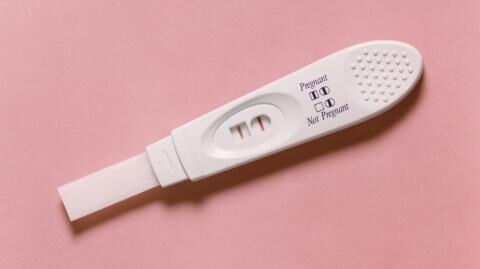The menstrual cycle is a complicated one. Each month our bodies ready themselves for pregnancy by thickening the endometrium and maturing an egg. Roughly halfway through this cycle, ovulation occurs, and the egg is released from the ovary into the fallopian tubes, ready for fertilisation.
Discover our latest podcast
Understanding when and how ovulation occurs will help people when trying for a baby, as this is when the body is most fertile.
When does ovulation happen?
After starting puberty around the ages of 11-18, the body will experience what is known as a menstrual cycle. This 28-day cycle takes place every month during a person’s reproductive ages and often results in a period or pregnancy.
The ovulation process begins in the follicular phase of the menstrual cycle, which takes place over days 1-13. The follicular phase is when a follicle-stimulating hormone causes one of the ovaries to develop egg cells, one of which will reach maturity over 13 days.
Ovulation itself takes place on the 14th day and will last 12-24 hours. In this time, the mature egg is released into the fallopian tubes, ready for fertilisation. If sperm fertilises the egg, then it moves to the uterus and implants on the endometrium. If not fertilised, the egg will disintegrate and will shed along with the endometrium in a period.
Once the period occurs, the menstrual cycle will begin again.
A study in 2003 suggested that some people may ovulate multiple times during their cycle, either naturally or from reproductive assistance. The lead researcher of the 2003 study also concluded that 10% of participants produced two eggs in a single month.
How long does ovulation last?
As a general rule, ovulation occurs around the 14th day of the menstrual cycle and lasts between 12-24 hours. However, some people have shorter or longer menstrual cycles, which will change the timing of ovulation.
Does ovulation hurt?
Ovulation doesn’t necessarily hurt, but some people do experience symptoms such as:
- spotting or light bleeding
- Breast tenderness
- Increased sex drive
- Slight cramping on one side of the abdomen
- An increase in vaginal discharge
Ovulation and pregnancy
The six days before and including ovulation is what’s known as the ‘fertile window’. During this time, sex is more likely to result in pregnancy. This is because sperm can last in the fallopian tubes for multiple days, giving it a chance to fertilise the egg when the time comes for ovulation. After the 12-24 hours of ovulation, the egg is no longer able to be fertilised hence the ‘fertile window.’
However, 'the fertile window' is not the only time a person can become pregnant, and pregnancy can occur anytime within the menstrual cycle.
If you aren’t looking to get pregnant, then practising safe sex can help protect the egg from fertilisation. There are many birth control methods, such as condoms and birth control pills. An appointment with your doctor will help you determine which one will be best for you.
Tracking ovulation
If you’re looking to get pregnant, tracking your menstrual cycle can be an excellent way to increase the chances of conception.
There are multiple ways to track ovulation, such as:
- Menstrual cycle tracking apps
- Basal body temperature charting (BBT)
- Ovulation predictor kits (OPK)
- Fertility monitors
Tracking your menstrual cycle through apps is a good idea regardless if you are trying to get pregnant. By following your cycle, you and your doctor can determine when something is wrong and diagnose any issues.
When to see a doctor
If you are tracking your menstrual cycle, you may notice that you don’t ovulate regularly or not at all. While this may be due to stress or diet, it could also be a sign of a hormonal issue such as polycystic ovarian syndrome, fibroids or endometriosis. If this is the case, then a doctor’s consult will be needed to diagnose any problems.
If you are trying to get pregnant, a doctor’s appointment will help answer any questions about ovulation and lifestyle changes that could increase the chances of conception or help maintain a healthy foetus.















